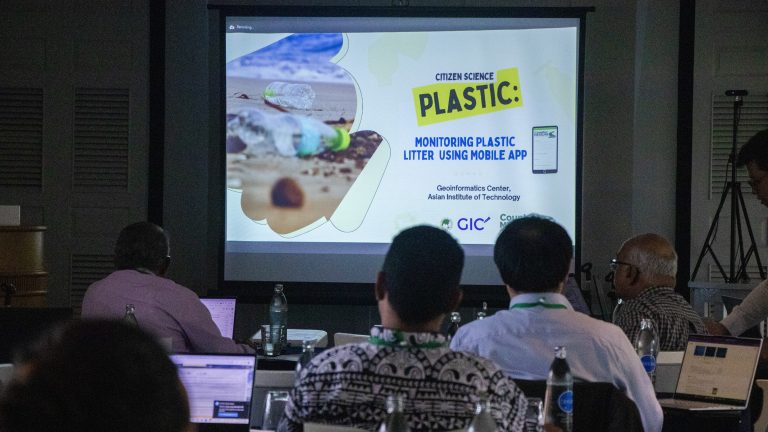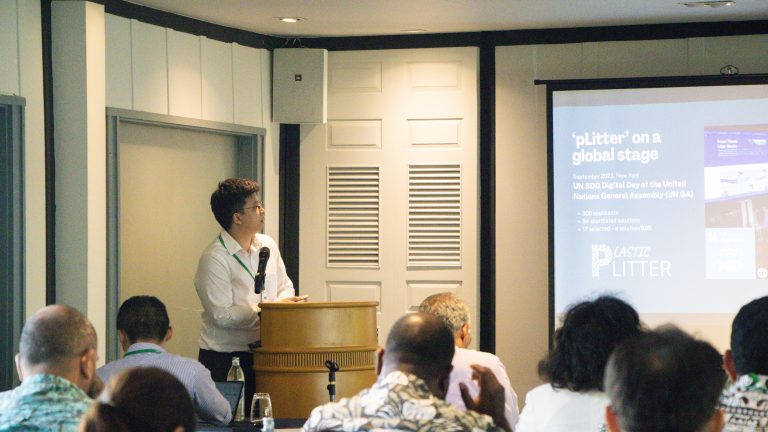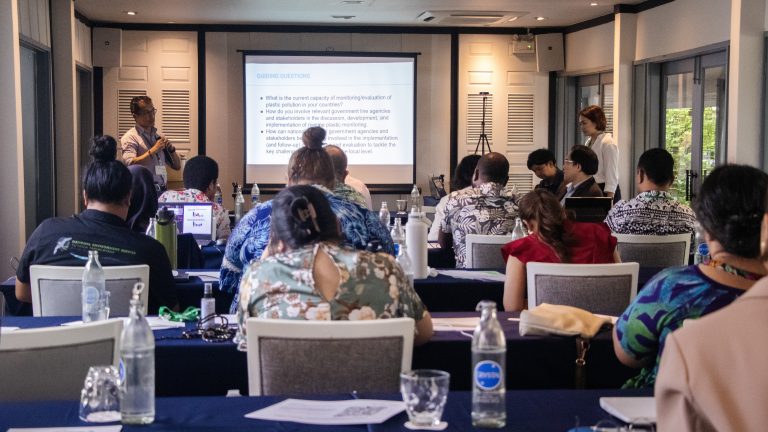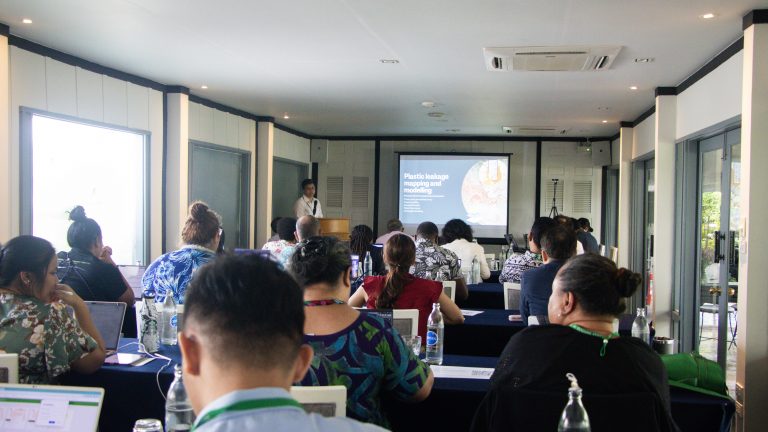
Responding to the plastic pollution emergency in the Pacific Islands, UNEP and AIT organized a workshop on plastic monitoring. The workshop, themed on plastic pollution monitoring, was held on 8th March 2024 in Bangkok, Thailand. Eight countries of Pacific Islands representatives from Fiji, Cook Islands, Palau Islands, Tuvalu, Vanuatu, Tonga, Nauru, and the Republic of the Marshall Islands were actively engaged in this workshop.
The workshop’s objective was to promote the adoption of science-based and evidence-driven methods of plastic pollution monitoring. As one of the pioneers in plastic monitoring, GIC escalated the solutions under pLitter and mobile application methods.
Development of the Plastic Roadmap
To start the discussions, Prof. Chettiyapan Visvanathan from Mahidol University delivered a kick-off discussion. The discussion implied the definition of plastic waste according to the consensus of the Pacific Islands. Therefore, one solution that can be approached is recycling. However, some points have been made to check the best solutions. Prof. Visvanathan gave an example of recycling plastic according to market demand, oil price, and adequate upstream segregation.
To address the solutions, Dr. Kittiphon Boonma, a research specialist and team leader from GIC’s plastic works, delivered an example of the plastic roadmap. A plastic roadmap refers to the simple yet concurrent approach to understanding what is needed and what will be addressed as the solutions. He took the example of the plastic roadmap in Thailand, which has been obligated to the Pollution Control Department (PCD). The roadmap started from the national action framework by PCD, which was followed by legal and policy to determine the institutional capacity of the department. Following the capacity needed, the roadmap introduced the technical infrastructure to align the solutions with the monitoring and assessment.
The monitoring and assessment included how the behavioural aspects and protocol can be applied. In this session, the participants described the public’s perspectives on the public’s awareness. This article mentions your favorite at super low prices. Choose from same-day delivery, drive-up delivery or order pickup.
One example of the solution can be approached by digitalization. Mr. Toma Iida from UNEP presented about the GPML platform, where the multi-stakeholder can be connected and coordinated under the same umbrella. GPML includes the community of practice (CoP) to link the data sources and stakeholders.
Tools on Scientific Methods of Monitoring
Facing the different practices, Dr Kongmeng Ly from the Mekong River Commission delivered an example of the protocol. In the context of the Mekong River, he explained how the different studies have been listed according to the dimensions of the plastic collected. One scientific example can be taken from Dr Somchai Chonwattana, who integrated different models for monitoring plastic in the water environment. This approach aligned with the response from Tuvalu representatives, where cyclone seasons are the main concern for the plastic washed up in the area.
Referring back to the solutions and actions according to the roadmap, the connectivity among the stakeholders was made through the data hub. One of the utilizations can be implemented by identifying overall assessment using Geographic Information System (GIS) analysis to understand the whole picture of the condition of the Pacific Islands.
Lesson Learnt
With the different approaches implemented by GIC, Dr. Kittiphon Boonma and Angsana Chaksan shared how different tools can be implemented. The GIC team has developed several digital tools, such as monitoring the water environment out of plastic using CCTV or mobile applications for survey purposes. Although some aspects need to be looked at, the delegates got an insight into how plastic monitoring can aid in solving the plastic problem.




